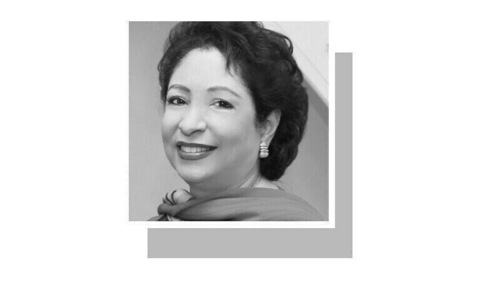ISLAMABAD: Pakistan’s average annual inflation was 4.53 per cent in the just-ended fiscal year, the lowest in over a decade, due mainly to falling oil prices, the Pakistan Bureau of Statistics said on Wednesday.
The government set an annual inflation target of 8pc for the fiscal year 2014-15. However, the central bank recently revised its target to between 4.5pc and 5.5pc.
Successive downward revisions in POL prices and a stable Pakistani rupee along with subdued global commodity prices were the main reasons behind low inflation. Average inflation was 8.62pc in 2013-14 and 7.36pc in 2012-13.
On a monthly basis, inflation was steady at 3.2pc in June 2015 compared to the previous month.
According to an official report, inflation has moved at slow pace since 2013 despite some policy adjustments.
In 2014-15, crude oil prices dipped by 45pc, followed by wheat 31pc, palm oil 27pc, sugar 26pc, soybean oil 25pc, urea 11pc and tea 8pc.
Core inflation — which is measured by excluding volatile food and energy prices — slowed for the ninth consecutive month to 4.6pc in June 2015 compared to 4.9pc in the previous month.
Falling inflation has also encouraged the State Bank of Pakistan (SBP) to cut its key interest rate to a 42-year low of 7pc.
Core inflation has remained subdued since November 2014 because of tight monetary policy and reduction in food and fuel prices.
In June 2015, food inflation stood at 3.2pc, while that of non-perishable and perishable items was 2.45pc and 2.17pc, respectively.
The food items whose prices increased included potatoes (31.72pc), tomatoes (22.58pc), chicken (14.91pc), besan (8.32pc), pulse gram (7.07pc), sugar (4.80pc), eggs (4.28pc), pulse mash (3.49pc), gur (2.98pc), and gram whole (2.43pc).
An increase of 17.54pc was seen in the prices of beverages in June over the same month last year, followed by 5.60pc in clothes and footwear, and 4.85pc in housing, water, electricity, gas and fuels.
Increase in domestic oil prices after a period of six months also pushed up transport prices by 1pc in June over the previous month.
Non-food inflation was 3.2pc in June. The items whose prices rose included kerosene (5.53pc) and motor fuel (2.71pc).
Average inflation measured through the Sensitive Price Index (SPI) was 1.74pc in 2014-15, while Wholesale Price Index (WPI) inflation was a negative 0.30pc. Lower WPI inflation reflects less demand for domestic commodities, apparently because of low purchasing power.
The entering of manufacturing sector into a negative growth indicates deflation in the economy.
Published in Dawn, July 2nd, 2015
On a mobile phone? Get the Dawn Mobile App: Apple Store | Google Play












































